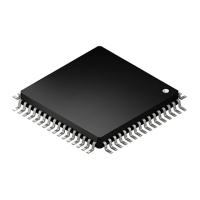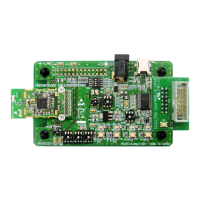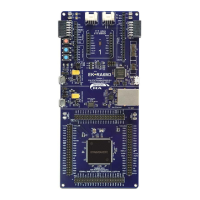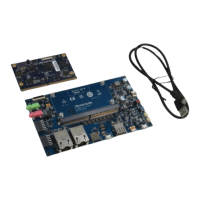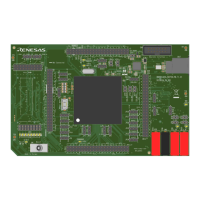of 58
Jan.20.22
3.3.2 Securing a Stack Area for Debugging
The debugger requires 4 bytes as a stack area for debugging except if start/stop functions (only supported
by the E2/E2 Lite) are in use, in which case the size of the stack area for debugging is up to 8 bytes. Since
this area is allocated immediately below the main stack area, the address of this area varies with increases
and decreases in the stack size. That is, if a program is using none of the stack (the stack is empty), the 4- or
8-byte stack area for the debugger remains.
Make sure the stack area for debugging does not go beyond the range of the internal RAM space.*
1
When a monitoring point (extended function of the E2) is in use, the size of the stack area for debugging is 6
bytes.
Figure 3-3 to Figure 3-5 show examples in which the stack area has increased with the start address of the
internal RAM space being 0xFCF00.
During self-programming, the size of the stack area for debugging is up to 12 bytes.
Refer to the self-programming manual for how to secure the stack area for self programming.
The start/stop function is disabled for self-programming.
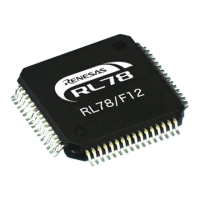
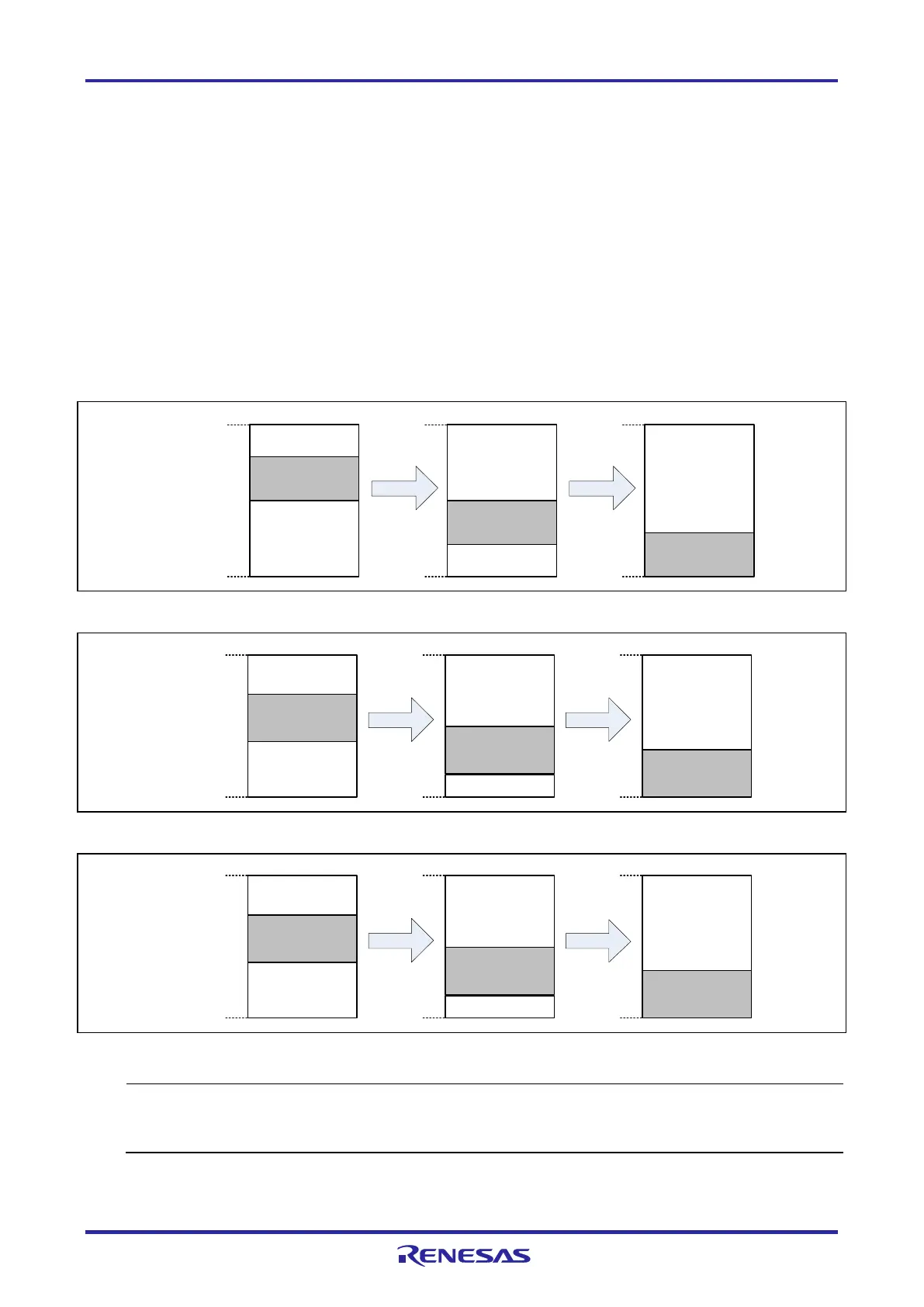